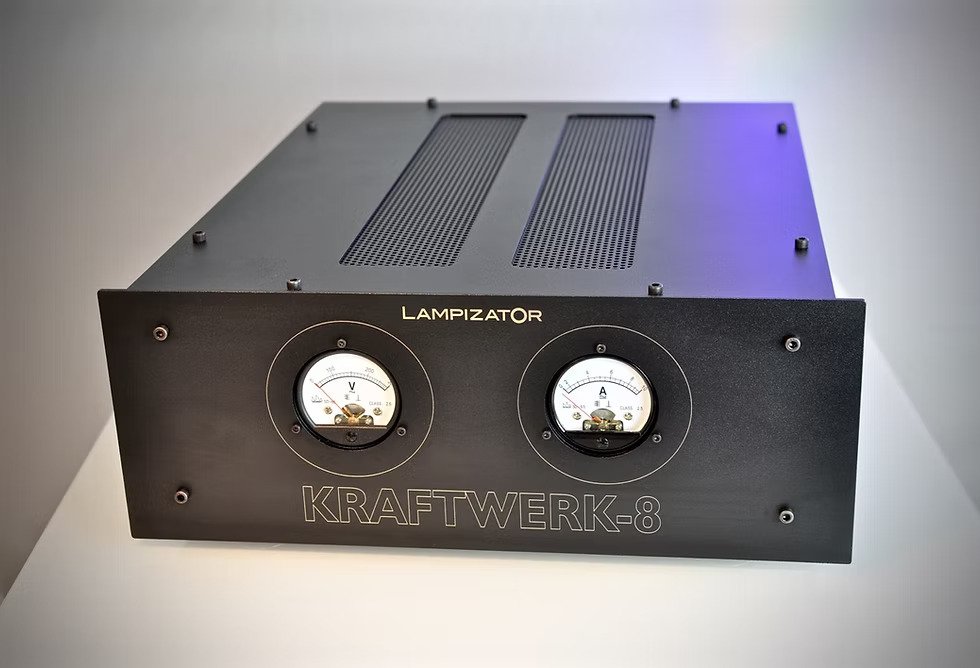
The Kraftwerk 10
KRAFTWERK-10 AC Filter
The Kraftwerk (German for Electric Power Plant) was conceived as a development of our 20 years old SILK project. We kept the good features like unrestricted, open sound, more analog style of presentation, better soundstage, easier to follow musical threads, darker background etc. We added 4 more filtered outputs and 2 unfiltered for the monoblocks. Another new feature is a DC blocker available for 4 filtered and 2 unfiltered outputs. We also added Voltmeter, Ampmeter, and much bigger chassis.
The electrical design is based on the Lukasz Fikus' Polytechnic studies diploma, where the AC and RFI/EMI influence on electronics was the subject. The SILK also was the fruit of frustration with the way other AC devices influence the sound. Namely, we believe that separation transformer based conditioners, AC regenerator conditioners, and deep filter conditioners make sound lifeless and uninvolving. We tried to design a filter that makes music actually MORE BEAUTIFUL !
What is MOST IMPORTANT is not to spoil the dynamics, live type of sound. Not choke the amplifier power and drive.
The main difference between Silk and Kraftwerk are: Silk is 4 outlets, Kraftwerk has 8+2 = 10 outlets.
The Kraftwerk is configurable as European - SCHUKO , British UK plug and USA, no other outlets are available. We can mix outlets on one unit - depending what cables you have or what cables are easiest to buy in your region. (the wall is one cable anyway)
Kraftwerk also has voltage meter and amprerage meter.
Kraftwerk accepts C19 AC plug cable only as an input. We supply the C19 cable if needed.
Silk was a filter only, in addition to filtering - Kraftwerk provides surge protrection, over-voltage protection, lightning protection and DC blocking.
MAIN PARAMETERS
Dimensions: 440mm [W] x 505 mm [D] x 180 mm [H]
Weight 10kg (net)
Copper version weight 11kg
Number of individually filtered outlets: 8
Number of non-filtered outlets 2 with DC blocking
DC blocked are 4 of the 8 filtered outputs and both unfiltered outputs
Max current per each filtered output: 10A or 2300 W
Max current per each unfiltered output: 10A or 2300 W
Max summary load current: 16A or 2,3 kW
No fuses, no switches.



